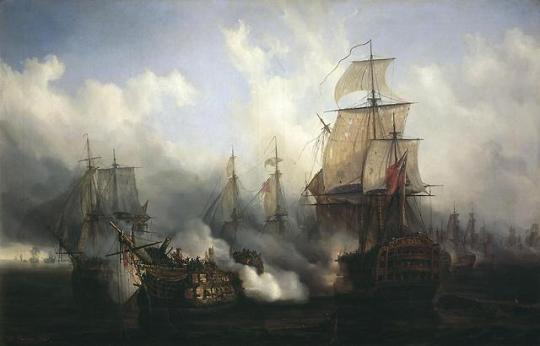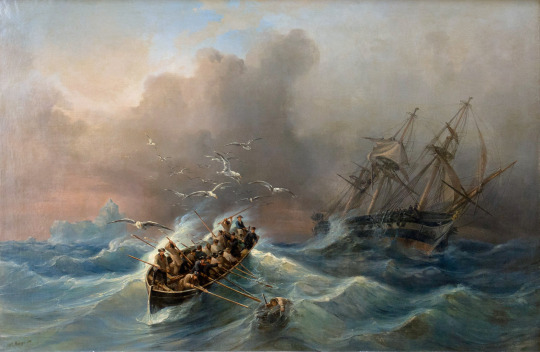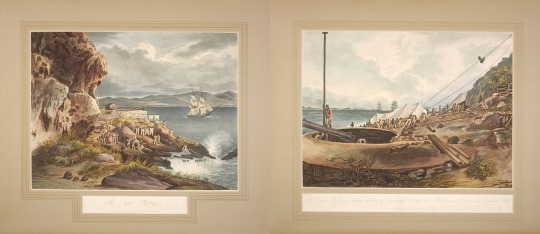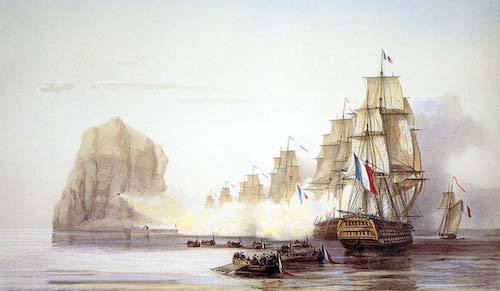#auguste étienne françois mayer
Text

Istanbul, View of the Ortaköy Mosque on the Bosphorus by Auguste Étienne François Mayer
#istanbul#art#auguste étienne françois mayer#bosphorus#ortaköy#mosque#turkey#boats#ships#sky#clouds#crescent moon#moon#constantinople#auguste etienne françois mayer
191 notes
·
View notes
Text

Indian Navy: Sails of Valor, Waves of Pride
#frigate#hermione#l'herminie#art#auguste étienne françois mayer#ship#ships#warship#age of sail#sea#ocean#marine#navy#boat#boats#french#france#waves#seagull#seagulls
0 notes
Text

View from Spitzbergen, by Auguste Étienne François Mayer (1805-1890)
162 notes
·
View notes
Photo

Unknown - Auguste Étienne François Mayer
#Battle of Trafalgar#HMS Temeraire#Bucentaure#Auguste Étienne François Mayer#ALineUponTheWind#AgeOfSail
5 notes
·
View notes
Text

'View from Spitzbergen'. Auguste Étienne François Mayer. 1805 - 1890.
29 notes
·
View notes
Text

Eruption of Vesuvius by Auguste Étienne François Mayer
#vesuvius#eruption#art#auguste étienne françois mayer#volcanic eruptions#volcano#volcanoes#lava#smoke#clouds#europe#european#italy#mt vesuvius#mount vesuvius#campania#gulf of naples#vesuvio#eruptions
246 notes
·
View notes
Text

The Frigate Hermione by Auguste Étienne François Mayer
#frigate#hermione#l'herminie#art#auguste étienne françois mayer#ship#ships#warship#age of sail#sea#ocean#marine#navy#boat#boats#french#france#waves#seagull#seagulls
129 notes
·
View notes
Text

French three-decker "Le Foudroyant" in 1724 in Brest, by Auguste Étienne François Mayer (1805–1890)
154 notes
·
View notes
Text

View from Spitzbergen, by Auguste Étienne François Mayer (1805 - 1890)
112 notes
·
View notes
Text

La frégate l'Herminie, by Auguste Étienne François Mayer (1805–1890)
93 notes
·
View notes
Text

La frégate l'Herminie, by Auguste Étienne François Mayer (1805–1890)
76 notes
·
View notes
Text
That’s not a rock, that’s HMS Diamond
In January 1804 the Royal Navy took possession of a rock, 180m high, 1,6 km off Martinique, the centre of French power in the Caribbean- and then declared the barren pinnacle a warship. This uninhabited islet was an ideal site for establishing a blockade as it dominated the approach to Port Royal. And, with a visibility of 64 km from the summit, a signal station could be set up to pass on intelligence about French ship movements.

Diamond Rock aka HMS Diamond Rock
However, there were a large number of obstacles to be overcome. The only landing spot was on the western side, heavy swells and narrow rock ledges mady any attempt to do so very chancy, and there was no food or water on the island. Commodore Samuel Hood hat reconnoitred the rock in his flagship HMS Centaur an was well aware of the challenges it posed. Fortunately his first lieutenant, James Wilkes Maurice, was an amateur mountaineer and he went ashore and found a route up the sheer rock face.

The officers and a camp, by John Eckstein 1805
A working party with several weeks provisions was landed. They found dry caves where they set up operations. With the aid of pitons and ropes the nimble seamen, used to swarming up rigging, scaled the heights and installed rope ladders. One hazard they had not bargained on, however, as the deadly local snake, the fer-de - lance.
Eventually ( depents on which sources) the defences of Diamond Rock comprised two 24- pounders just above sea level, a 24- pounder halfway up and two 18- pounder cannon right on top. Getting these massive waepons in place was a undertaking which took long backbreaking days at the capstan. After a line was run ashore a cable was rigged from the mainmast of th anchored Centaur to the top ofthe cliff, and the big guns were painstakingly hauled to the rock using an ingenious sling. Then began task of landing water and provisions for 120 men. Maurice was installed ashore as commander, a pennant was run up and Diamond Rock was officially rated as a sloop of war.

This battery hindered shipping traffic between Martinique and St. Lucia for 17 months. And since the range of the cannons from the summit was great and the damage to French shipping was enormous, it was not unusual for the French to launch undertakings to put the stone frigate out of action. The first major attempt failed after the completely exhausted French had rowed to the rock with difficulty and could only reach their destination in daylight.

Admiral Pierre de Villeneuve, sent to the Caribbean in 1805, prepared the reconquest of the island. The cistern was destroyed during the raid (there are also different statements, some say that it was Villeneuve's ships that hit the cistern, others speak of an earthquake) and Mauric surrendered on 2 or 3 June. The British recorded two dead and one wounded. The losses on the French side cannot be determined exactly, but it could have been up to 50 dead and wounded. Villeneuve's squadron also lost three gunboats.

Due to the fact that Diamond Rock was an official "ship" of the Royal Navy, James Wilkes Maurice had to face a court martial for the loss. However, he was not convicted.

Capture of the Diamond rock, by Auguste Étienne François Mayer (1805 - 1890)
Today, the volcanic island of Rocher du Diamond is an important bird sanctuary. As a state protected area, landing on the island is prohibited, so that visitors can only view this place from the sea.
503 notes
·
View notes
Text

Fight of the French brig Cygne against a British boat party, 12th December 1808, by Auguste Étienne François Mayer (1805–1890)
Arriving near Martinique, Cygne under the command of Lieutenant Menouvrier Defresne was chased by the frigate HMS Circe ( Captain Augustin Collier), the corvette Stork ( Commander George Le Geyt), the brigs HMS Morne Fortunee ( Captain John Brown), Amaranthe (Captain Pelham Brenton), Epervier (Captain Thomas Tudor) and the schooner Express ( Captain William Dowers). On 12 December 1808, Cygne passed the Northern cape of Martinique; seeing that he would be overhauled by the British squadron before reaching Saint-Pierre, Menouvrier Defresne decided to drop anchor under a shore battery at Anse Céron.
Two of the British brigs then dropped anchor in positions that cut Cygne′s retreat to Saint-Pierre, while the other ships launched boats to attempt a cutting out boarding. Cygne sank three before they reached her. Circe approached with her crew ready for boarding, but was repelled by a grapeshot broadside, while the surviving boats reached Cygne′s stern; the British party was repelled and 17 men were taken as prisoner.
The next day, Cygne found herself becalmed; Defresne attempted to move his ship by having her hauled from the shore by infantrymen and by using her oars, and progressed towards Saint-Pierre, under fire from Amaranthe. But due to a navigation error, Cygne ran aground and started taking water. As the other British ships closed within range, Defresne ordered Cygne abandoned and scuttled by fire.
Defresne was offered a sword of honour by the city of Saint-Pierre for his defence. As a token of esteem, Brenton gifted him a sword belt, and Lieutenant Hay, Brentons first, a dagger.
#naval art#french brig cygne (swan)#HMS Circe#corvette stork#HMS morne#HMS amaranthe#HMS Epervier#HMS express#1808#age of sail
21 notes
·
View notes
Photo

Fight of the French brig Cygne against a British boat party by Auguste Étienne François Mayer (1805–1890)
Arriving near Martinique, Cygne under the command of Lieutenant Menouvrier Defresne was chased by the frigate HMS Circe (Augustin Collier), the corvette Stork (George Le Geyt), the brigs HMS Morne Fortunee (John Brown), Amaranthe (Pelham Brenton), Epervier (Thomas Tudor) and the schooner Express (William Dowers). On 12 December 1808, Cygne passed the Northern cape of Martinique; seeing that he would be overhauled by the British squadron before reaching Saint-Pierre, Menouvrier Defresne decided to drop anchor under a shore battery at Anse Céron.
Two of the British brigs then dropped anchor in positions that cut Cygne′s retreat to Saint-Pierre, while the other ships launched boats to attempt a cutting out boarding. Cygne sank three before they reached her. Circe approached with her crew ready for boarding, but was repelled by a grapeshot broadside, while the surviving boats reached Cygne′s stern; the British party was repelled and 17 men were taken prisoner.
The next day, Cygne found herself becalmed; Defresne attempted to move his ship by having her hauled from the shore by infantrymen and by using her oars, and progressed towards Saint-Pierre, under fire from Amaranthe. But due to a navigation error, Cygne ran aground and started taking water. As the other British ships closed within range, Defresne ordered Cygne abandoned and scuttled by fire. Defresne was offered a sword of honour by the city of Saint-Pierre for his defence. As a token of esteem, Brenton gifted him a sword belt, and Lieutenant Hay, Brentons first, a dagger.
#naval art#french cygne#HMS Circe#corvette stork#brigs morne fortunee amaranthe#epervier#schooner express#1808#age of sail#stubborn little beast#the french
35 notes
·
View notes
Photo

The French Corvette La Recherche near Bear Island on August 7, 1838. by Auguste Étienne François Mayer 1852
The La Recherche Expedition of 1838-1840 was a French Admiralty expedition whose destination was the North Atlantic and Scandinavian islands, including the Faroe Islands, Spitsbergen and Iceland.
On 13 June 1838 the French corvette La Recherche left Le Havre in France, bound for Northern Scandinavia. Joseph Paul Gaimard (1796-1858), a physician and zoologist was the commanding officer of the expedition. The expedition was on a purely scientific nature, rather than a colonial venture in cooperation with the governments of Norway and Sweden.
44 notes
·
View notes